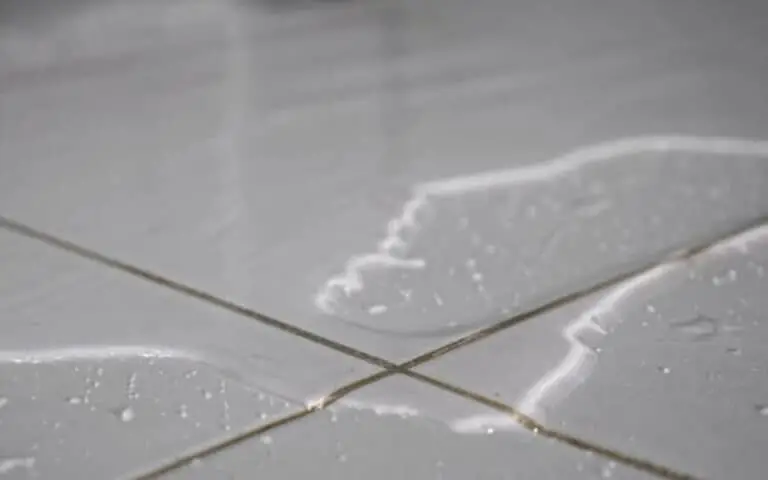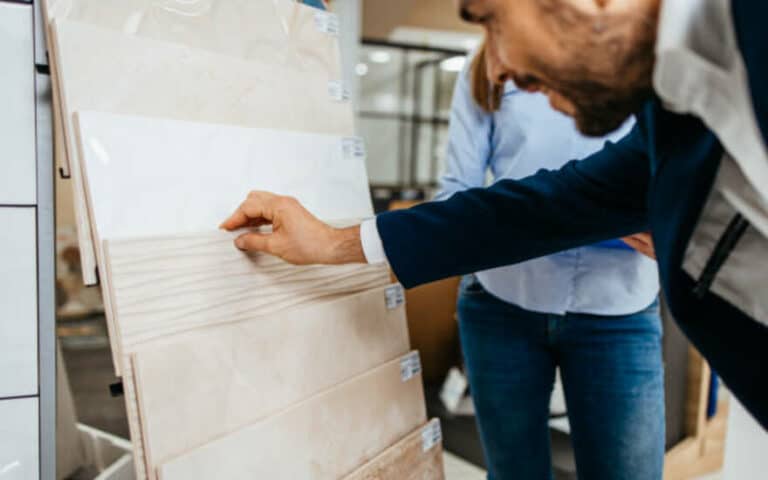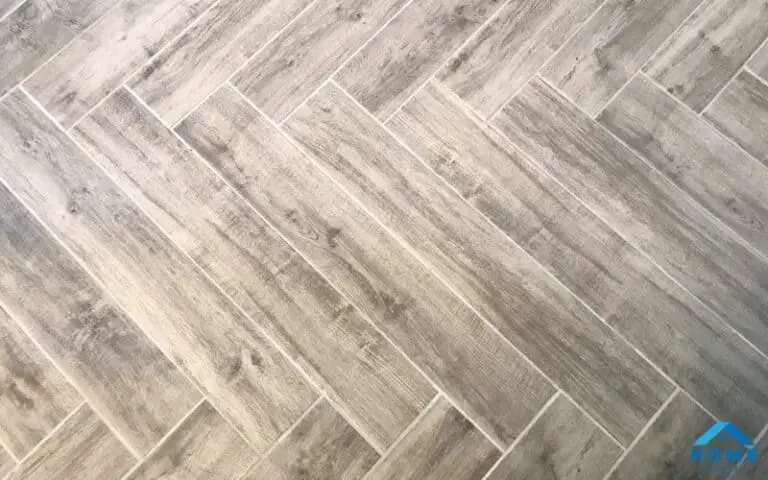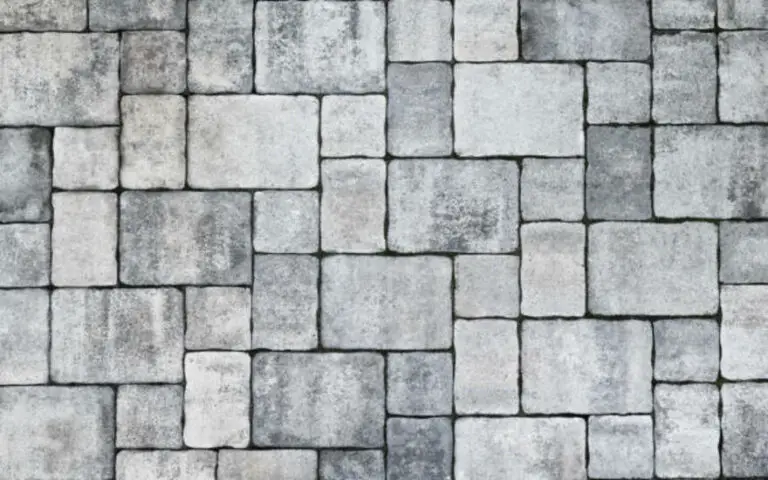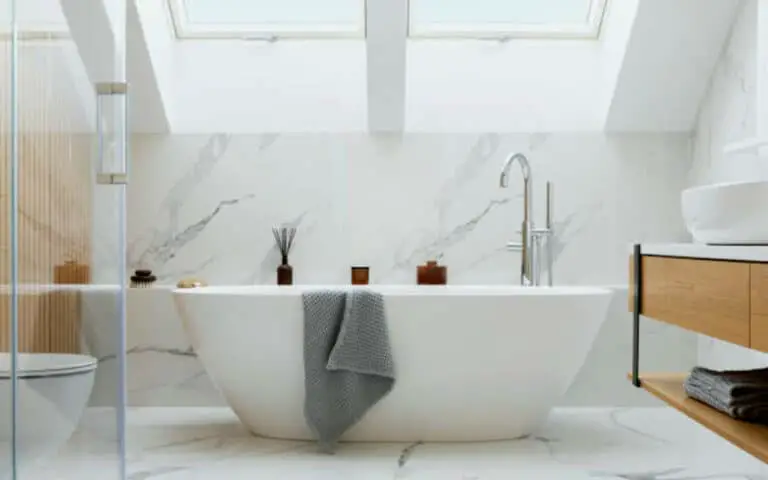I have the answers to repair your peeling laminate floors and make them look new. Read on for our top tips and tricks on how to fix laminate floor peeling.
![How To Fix Laminate Floor Peeling [Step By Step] 1 istockphoto 1162519511](https://homequeries.com/wp-content/uploads/2023/02/istockphoto-1162519511-612x612_880x550.jpg)
How To Fix Laminate Floor Peeling: Step By Step
Now that you know the causes of laminate floor peeling and how to repair buckled and peaking laminate, it’s time to get to the nitty-gritty of how to fix it. The steps below will help you get your laminate floor back in shape – so let’s get started.
Step 1: Prepare the Area
To begin the repair process, preparing the area properly is essential. Start by sanding the area around the peeling laminate with fine-grit sandpaper. This will help create a smooth surface and ensure the new laminate planks adhere correctly.
When you finish sanding, wipe the area with a clean, damp cloth to remove dust and excess filler. Also, take the heating tool from your floor repair kit, flick the safety catch, and press the button to heat the tip. Press the heated information on any remaining glue when it is warm enough to melt it.
This will help to ensure that your new laminate planks bond securely to your floorboards. Finally, protect your laminate floor from water damage by learning more tips from HomeServe’s How to repair laminate flooring than got a wet guide. With these simple steps, you can start fixing your peeling laminate floor!
Step 2: Remove the Peeling Laminate
Now that we have prepared d the and cleaned, and dried the floorboards, it is time to remove the peeling laminate. The best way to do this is to use a circular saw or jigsaw.
Make sure you put on protective eyewear and gloves before cutting, as this will help to protect you from any debris that could fly up while you are working. Cut slowly, following the contours of the boards. Once the laminate has been removed, you can discard it or use it as a template for cutting your new planks.
Step 3: Clean and Dry the Floorboards
Once you have removed the peeling laminate, the next step is to clean and dry the floorboards beneath. To do this, vacuum up any debris or dust and then use a damp cloth to wipe down the surface, making sure to get into any grooves or crevices.
Once the floorboards are clean, make sure to dry them thoroughly. Suppose there are any areas of standing water. In that case, you may need to use a fan or dehumidifier to ensure the floorboards are completely dry before applying any adhesive. Doing this will help prevent future peeling caused by moisture and humidity.
Step 4: Apply Adhesive to the Floorboards
Once you have prepared the area, removed the peeling laminate, and cleaned and dried the floorboards, it’s time to apply adhesive. You can use a trowel or caulking gun to spread a thin layer of glue to each board.
Make sure to spread the adhesive evenly, and don’t forget to get into all the corners and edges. Once you have applied the glue to all boards, please wait for it to dry before moving on to the next step.
Step 5: Install the New Laminate Planks
After preparing the area, removing the peeling laminate, cleaning and drying the floorboards, and applying adhesive, installing the new laminate planks is time. To do this, start at one corner of the affected area and lay the new planks.
Press each plank into place and use a rubber mallet to ensure a secure fit. Ensure all planks are tightly fitted together with no gaps in between. Continue to lay all the planks in the same direction until the affected area is covered. Once all planks are installed, allow them to dry and cure before using them again. With proper installation, your laminate floor should look good as new!
Step 6: Allow Laminate Planks To Dry
Once you have installed the new laminate planks, allowing them to dry thoroughly before walking on them is essential. This is usually a process that takes several days.
It’s essential to ensure that the room’s humidity levels remain low during this time, as too much moisture can cause the planks to buckle or warp.
Keep the area well-ventilated, and avoid using any cleaning products until the planks are completely dry. If you followed all the steps correctly, you should now have a secure floor that is no longer peeling.
Why do laminate floors peel?
Laminate floors can sometimes start peeling off or chipping off due to minor accidents like dropping a sharp object, moisture and humidity issues, incorrect installation methods, or lack of maintenance.
It’s essential to understand the root cause of the peeling to fix it properly. Moisture and humidity can cause the boards to expand and contract, which can cause the sealant to wear away or start peeling.
If your floor was installed incorrectly, it could also be a factor in why your laminate floor is peeling. Finally, if you have not correctly cared for your foot, this could also lead to peeling. It’s essential to clean and dry your laminate floor regularly to keep it looking its best.
By understanding the causes of your laminate floor peeling, you can take the necessary steps to fix the problem and keep your floors looking beautiful.
1. Causes of Laminate Floor Peeling
As we discussed in the previous sections, laminate floor peeling has several causes. Moisture and humidity can cause the boards to expand and contract, leading them to separate and peel.
Incorrect installation methods, such as not allowing enough expansion space between the boards or not using an appropriate underlayment, can also lead to peeling.
Finally, lack of maintenance can cause dirt and grime to accumulate on the surface, increasing friction and wear, which can cause peeling. To prevent peeling, it is essential to ensure proper installation methods, maintain a consistent humidity level and keep the floor clean.
2. Issues with moisture and humidity
As we discussed in the previous sections, one of the leading causes of laminate floor peeling is issues with moisture and humidity.
When a spill stays on the floor for some time, moisture seeps between the planks causing warping, peeling, and other defects. Humidity can also adversely affect laminate floors, as water may seep into the floorboards and cause them to swell.
This can cause boards to wrap, lift or buckle. To reduce the risk of these issues, cleaning spills immediately is essential, as maintaining adequate humidity levels in the room and ensuring proper installation. These steps will help ensure your laminate floor remains in perfect condition for years.
3. Incorrect installation methods
Incorrect installation methods can cause your laminate flooring to start peeling. Poor installation can lead to moisture or humidity seeping into the boards and causing them to swell or buckle.
If your floor wasn’t installed correctly, you might need to remove the old boards and replace them with new ones. Ensure you use the correct adhesive and follow the manufacturer’s instructions when installing new laminate flooring.
If you’re unsure, consulting with a professional is always a good idea. Taking the time and effort to ensure your floor is installed correctly will help you avoid any future peeling or buckling problems.
4. Lack of maintenance
As we saw in the previous sections, lack of maintenance is one of the major causes of laminate floor peeling. Without proper care, the flooring can become susceptible to moisture and humidity. That’s why it’s essential to clean your laminate floor regularly.
Vacuum it once a week, and mop it with a damp cloth when necessary. You should also wax your laminate floor occasionally to give it extra protection from moisture and dirt. These steps will help your laminate floor stay in excellent condition for years!
How to repair Buckled Laminate?
Unfortunately, the only way to repair a buckled laminate is to replace the planks with a new one. This cannot be easy, so take extra care when carrying out the replacement. Firstly, make sure to check the cause of the buckling.
This could be due to water or moisture damage or because the floor was not acclimated before installation. Once you have determined what caused the buckling, you should fix the cause and remove any moldings.
Then, soak up all the excess moisture on the damaged area with towels and clean it with a good disinfectant cleaner that’s safe for your hardwood floors. Afterward, replace the wall molding with a screwdriver or hammer and remove the damaged board.
If you have snap and lock flooring, simply lifting the affected board will be enough to remove it. Finally, install new laminate planks and allow them to dry before you walk on them again.
How to repair Laminate Peaking?
Laminate peaking can be a tricky problem to fix, but it’s not impossible. To repair peaking, start by identifying the underlying cause. Common causes include issues with moisture and humidity, incorrect installation methods, and lack of maintenance.
Once the cause has been identified, you can begin the repair process. Start by removing the planks that are peaking and cleaning the area thoroughly.
Next, apply adhesive to the floorboards. Finally, install the new laminate planks and let them dry completely before walking on them. With patience and careful work, you can repair laminate peaking and make your floors look new.
Summary
In summary, laminate floor peeling can be caused by several factors, including moisture and humidity, incorrect installation methods, and lack of maintenance.
Preparing the area, removing the peeling laminate, cleaning and drying the floorboards, applying adhesive, and installing the new laminate planks are essential to fix the problem. After allowing the planks to dry, you should have a repaired laminate floor.
Repairing buckled or peaking laminate may require additional steps, such as using repair putty or replacing the damaged planks. You can fix even the most stubborn of laminate floor peeling problems with care and attention to detail.


